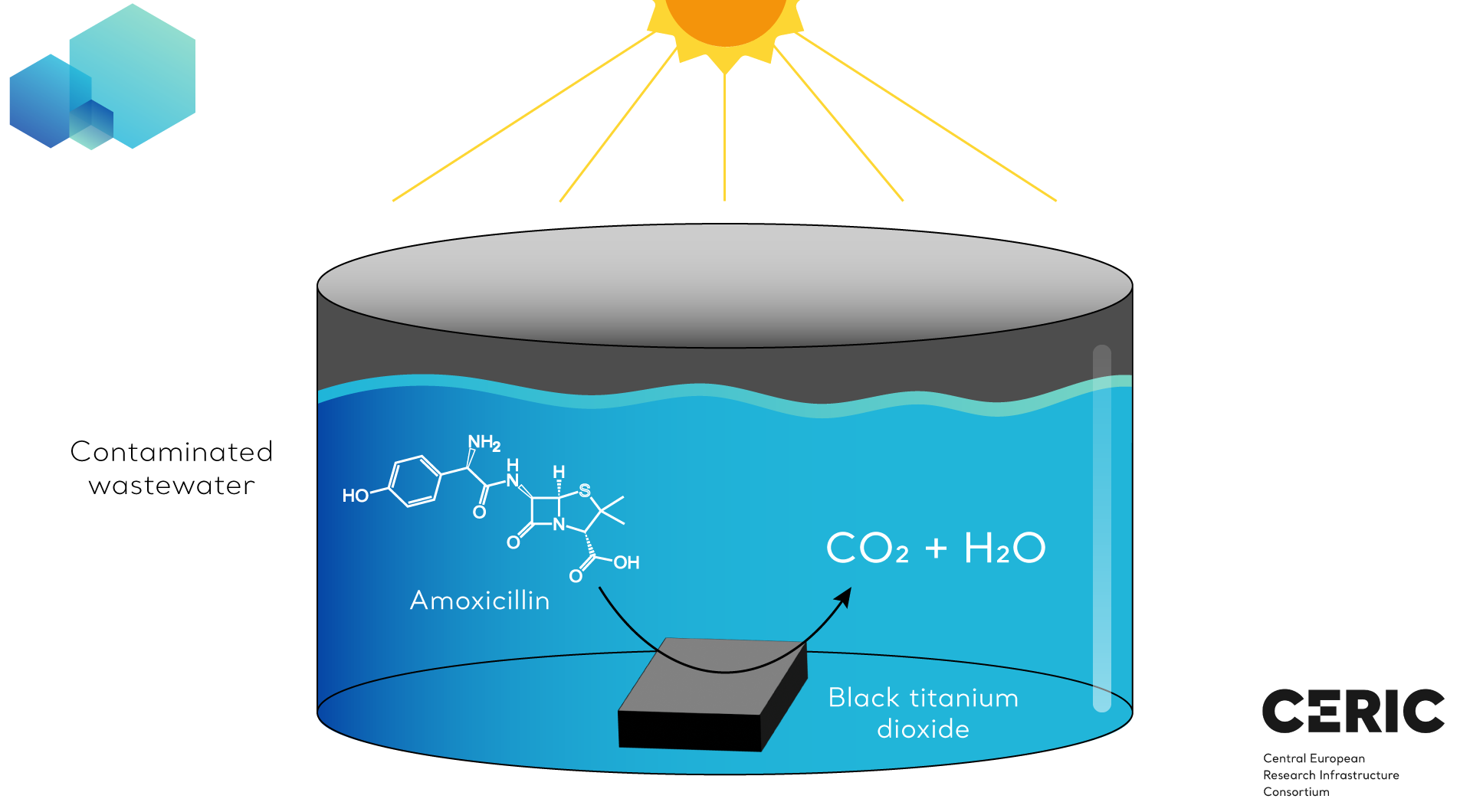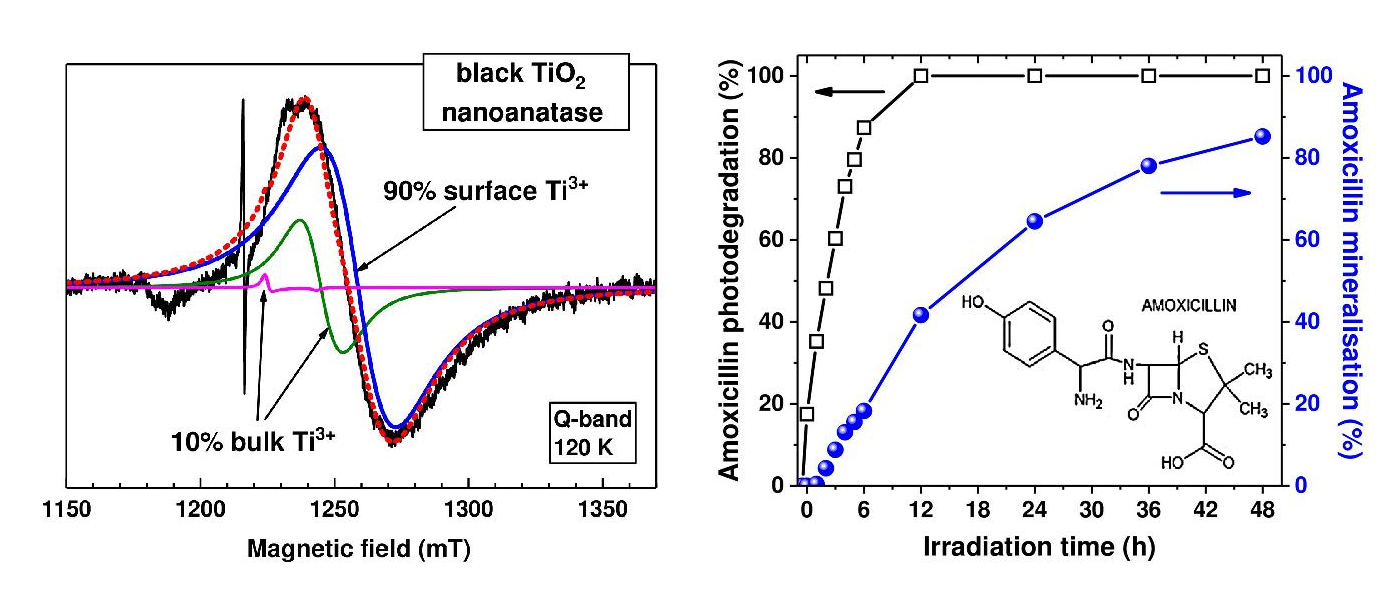Scientists tested a potential solution to face antibiotics’ contamination in water bodies
|Antibiotics are among the most popular pharmaceuticals, allowing incredible achievements in numerous sectors such as farming, veterinary care and human health. However, their ever-growing employment is causing the contamination of water bodies such as wastewater, municipal sewages, and treatment plants. This aspect is particularly problematic since it’s one of the primary sources of antibiotic resistance, a threat to public health. Therefore, effectively removing antibiotics from water bodies is a pressing issue.

Prof. Luminita Andronic (Transilvania University of Brasov), Dr. Mariana Stefan (National Institute of Materials Physics), and colleagues, with the support of the CERIC funded PhD student Catalina Mihalcea, tested the effectiveness of black titanium dioxide in promoting the degradation of amoxicillin, a common antibiotic. This innovative material, like other photocatalysts, can increase the antibiotic’s degradation rate under light irradiation. However, differently from its white counterpart is more effective in the range of visible light, making black titanium dioxide an attractive option for applications under sunlight conditions. Samples of this material, prepared in various conditions, were analysed with different techniques to characterise their properties, including Electron Paramagnetic Resonance (EPR), available at the Romanian CERIC Partner Facility at the National Institute of Materials Physics in Magurele.

Electron paramagnetic resonance investigations showed that the formation of surface Ti3+ defects in high concentration occurred mainly in the anatase sample annealed at 400 oC. Furthermore, they exhibited over 90% efficiency in the degradation of amoxicillin after 6h under simulated solar irradiation compared with pristine TiO2. Such achievement provides an attractive option to reduce the risk of antibiotic resistance, which risks becoming a paramount issue soon.



